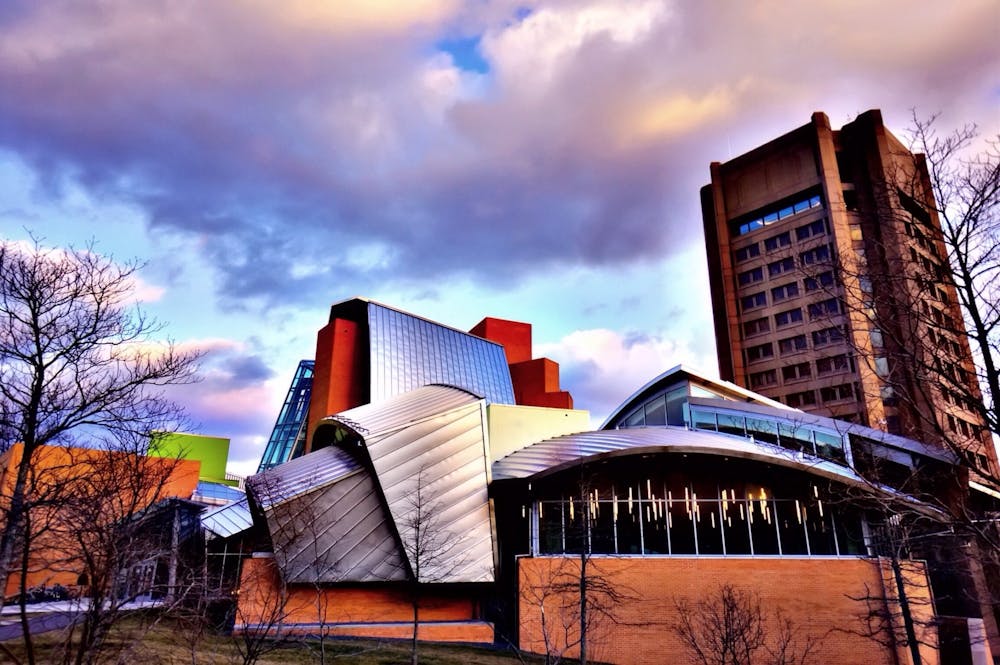Assistant mathematics professor Aleksandr Logunov has been awarded the Packard Fellowship for Science and Engineering for his work in nodal geometry. Along with the other 21 early-career scientists chosen, he will receive $875,000 over five years to support his research.
The fellowship comes after Logunov won several accolades for proving the Yau and Nadirashvili conjectures, which first interested him as a student in Russia.
According to the Department of Mathematics, the Packard Fellowship supports the “blue-sky thinking of scientists and engineers with the belief that their research over time will lead to new discoveries that improve people’s lives and enhance our understanding of the universe.”
“In the middle school, I accidentally by sheer luck ended up in a mathematical circle in Russia … You have academics who teach middle school kids,” Logunov said in an interview with The Daily Princetonian. “It’s a very well-developed system that’s coming from the Soviet times.” He described his secondary education as “more like Olympiad-level problem solving.”
Logunov entered St. Petersburg State University, where he earned his Ph.D. in 2015 under Viktor Havin. “I got permission to study both economics and mathematics, but after I think two weeks, it was a clear and obvious choice,” he said.
Logunov then spent two years as a postdoctoral fellow at Tel Aviv University, where he published three papers on Laplace eigenfunctions with Mikhail Sodin and taught a class on harmonic analysis for one semester. “I had a very remarkable time there,” he recalled, “It was a revelation."
Logunov’s most famous work, for which he won the 2018 Salem Prize, was his proving of the conjectures of Shing-Tung Yau and Nikolai Nadirashvili on the zero sets of Laplacian eigenfunctions. “They were equations which many mathematicians tried,” Sodin said, adding that Logunov began working on them at St. Petersburg with Eugenia Malinnikova, whom Havin also advised.
In Tel Aviv, Logunov met every week with Sodin and another colleague, Lev Buhovsky, to relate his progress with the Yau and Nadirashvili conjectures. Sodin recalled the moment in February 2016, during a school break, when he got a call from Logunov. “He called and said, ‘Misha, I think I have some progress I want to tell you,’” Sodin said. He invited Logunov to meet with him and “he said, ‘why not?,’ and he came to my apartment.”

“He needed several details at the time, but it was clear he could solve the equations,” Sodin said.
In the next year, Logunov frequently visited Malinnikova at the Norwegian University of Science and Technology, where his technique was used to prove the lower bound in the Yau conjecture. Malinnikova called his discovery “a simple but unexpected solution.” In January 2017, scholars at the University worked with Nadirashvili to find a way to approach the upper bound.
Malinnikova did not want recognition as a coauthor because, as she told the ‘Prince,’ “it was after he solved the conjecture.”
“He was very much distressed by this,” Sodin recalled, “but, unfortunately, she didn’t want to cosign the paper.” Eventually, she agreed to cosign one of the three papers, and, according to Sodin, “they noted very clearly in the introduction that this paper should be regarded as their joint work.”

In 2017, Logunov and Malinnikova were jointly awarded the Clay Research Award.
In March 2017, Logunov and Malinnikova presented their work at a conference at the Institute for Advanced Study, whose report noted that “Logunov was bombarded by many questions about clarifications of ideas used in his approach to Yau’s conjecture.”
“He was hesitating between coming to Princeton and other places like MIT or Berkeley,” Sodin said, “but it was clear that he would have the opportunity to talk to several very great mathematicians in that area [in Princeton], and I think that was the decisive factor.”
He spent one year at the Institute for Advanced Study before joining the University in fall 2018, where he has taught MAT 202: Linear Algebra with Applications and MAT 425: Analysis III: Integration Theory and Hilbert Spaces.
With the funding from his Packard Fellowship, Logunov said he hopes to help graduate students with postdoctoral research at the University.
“Probably I will be able to organize a workshop conference,” he said, noting it would be held about five years from now.
“He’s a very, very clever young mathematician with some brilliant ideas and very original ideas,” Sodin said. “It’s not so easy to read his papers, they’re very deep and very concise.”








